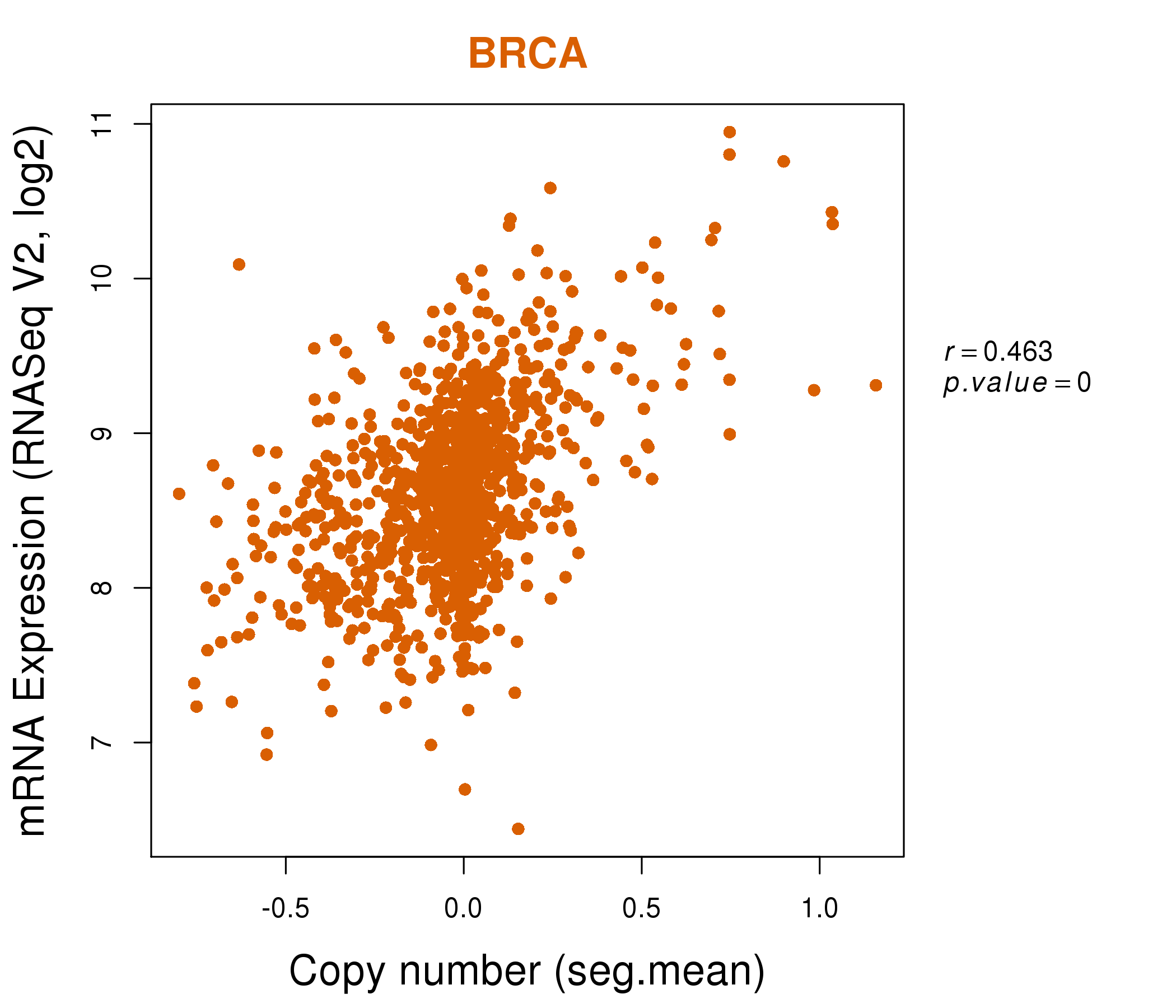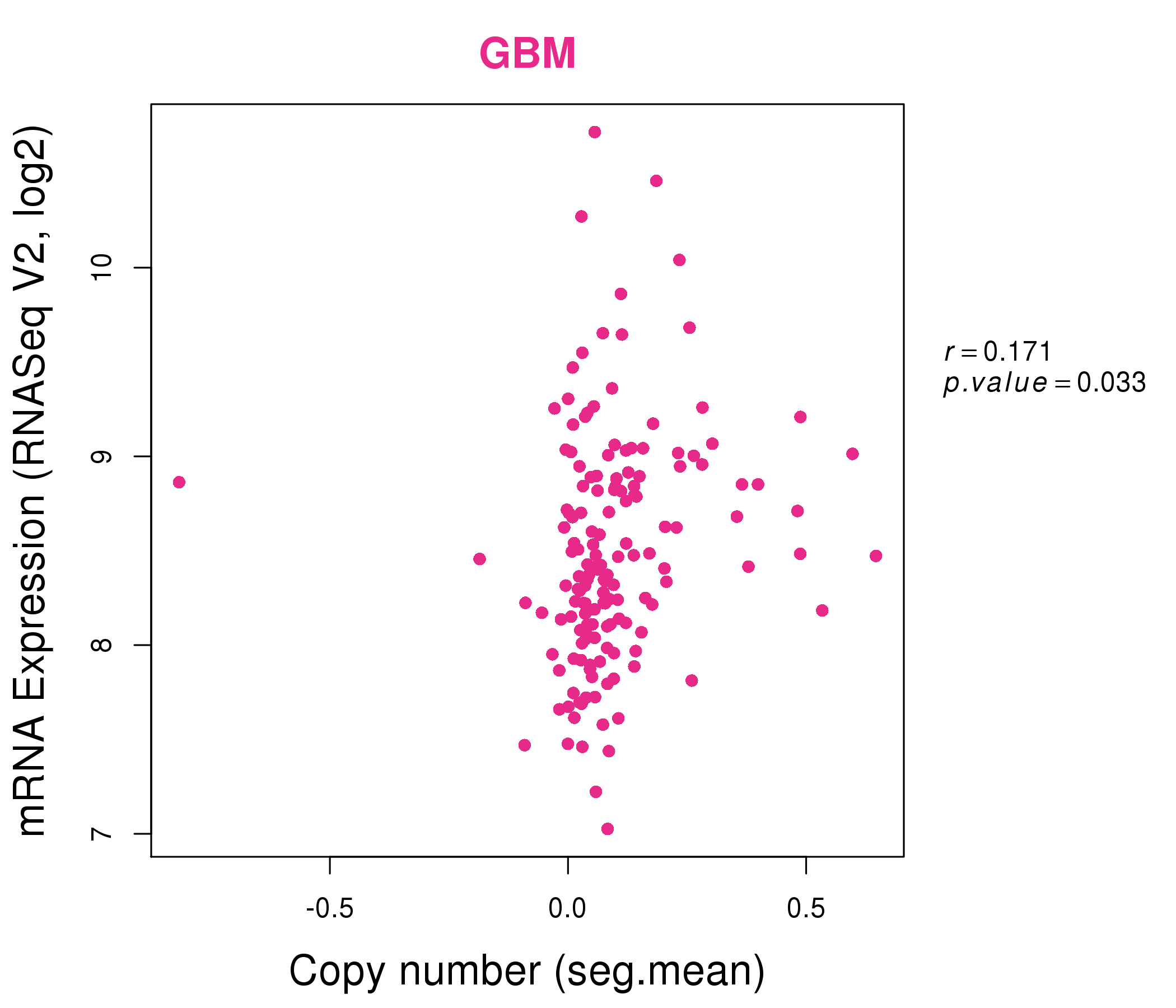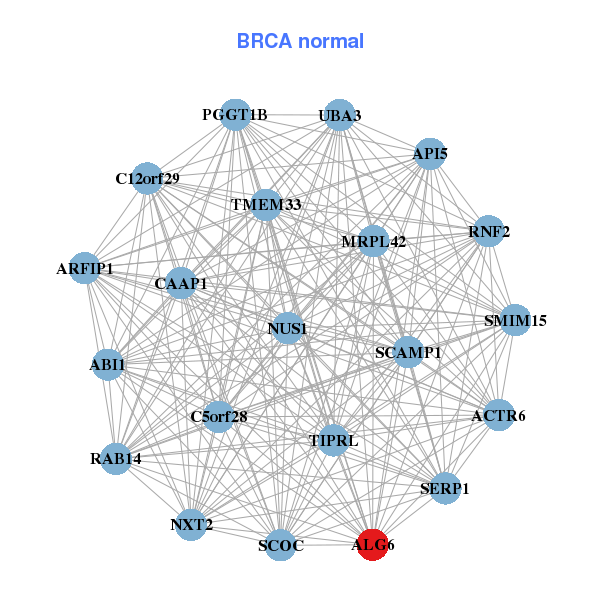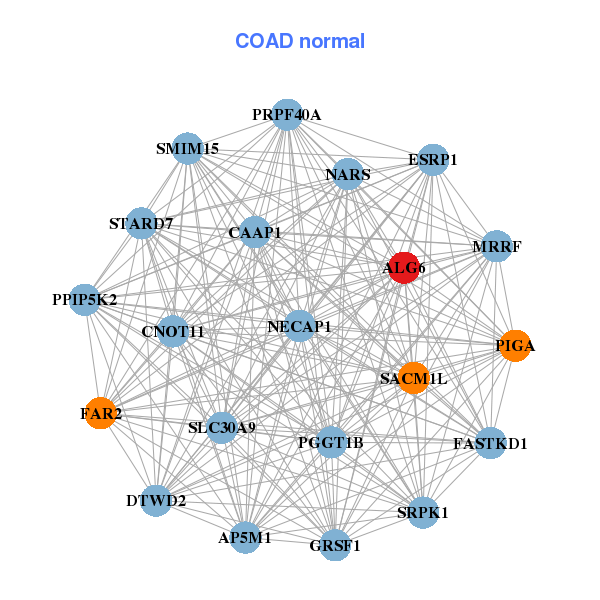|
||||||||||||||||||||||||||||||||||||||||||||||||||||||||||||||||||||||||||||||||||||||||||||||||||||||||||||||||||||||||||||||||||||||||||||||||||||||||||||||||||||||||||||||||||||||||||||||||||||||||||||||||||||||||||||||||||||||||||||||||||||||||||||||||||||||||||||||||||||||||||||||||||||||||||||||||||||||||||
| |
| Phenotypic Information (metabolism pathway, cancer, disease, phenome) |
| |
| |
| Gene-Gene Network Information: Co-Expression Network, Interacting Genes & KEGG |
| |
|
| Gene Summary for ALG6 |
| Basic gene info. | Gene symbol | ALG6 |
| Gene name | ALG6, alpha-1,3-glucosyltransferase | |
| Synonyms | CDG1C | |
| Cytomap | UCSC genome browser: 1p31.3 | |
| Genomic location | chr1 :63833260-63904233 | |
| Type of gene | protein-coding | |
| RefGenes | NM_013339.3, | |
| Ensembl id | ENSG00000088035 | |
| Description | Man(9)GlcNAc(2)-PP-Dol alpha-1,3-glucosyltransferaseasparagine-linked glycosylation 6 homolog (S. cerevisiae, alpha-1,3-glucosyltransferase)asparagine-linked glycosylation 6 homolog (yeast, alpha-1,3-glucosyltransferase)asparagine-linked glycosylation | |
| Modification date | 20141219 | |
| dbXrefs | MIM : 604566 | |
| HGNC : HGNC | ||
| Ensembl : ENSG00000088035 | ||
| HPRD : 05194 | ||
| Vega : OTTHUMG00000009140 | ||
| Protein | UniProt: go to UniProt's Cross Reference DB Table | |
| Expression | CleanEX: HS_ALG6 | |
| BioGPS: 29929 | ||
| Gene Expression Atlas: ENSG00000088035 | ||
| The Human Protein Atlas: ENSG00000088035 | ||
| Pathway | NCI Pathway Interaction Database: ALG6 | |
| KEGG: ALG6 | ||
| REACTOME: ALG6 | ||
| ConsensusPathDB | ||
| Pathway Commons: ALG6 | ||
| Metabolism | MetaCyc: ALG6 | |
| HUMANCyc: ALG6 | ||
| Regulation | Ensembl's Regulation: ENSG00000088035 | |
| miRBase: chr1 :63,833,260-63,904,233 | ||
| TargetScan: NM_013339 | ||
| cisRED: ENSG00000088035 | ||
| Context | iHOP: ALG6 | |
| cancer metabolism search in PubMed: ALG6 | ||
| UCL Cancer Institute: ALG6 | ||
| Assigned class in ccmGDB | C | |
| Top |
| Phenotypic Information for ALG6(metabolism pathway, cancer, disease, phenome) |
| Cancer | CGAP: ALG6 |
| Familial Cancer Database: ALG6 | |
| * This gene is included in those cancer gene databases. |
|
|
|
|
|
| . | ||||||||||||||||||||||||||||||||||||||||||||||||||||||||||||||||||||||||||||||||||||||||||||||||||||||||||||||||||||||||||||||||||||||||||||||||||||||||||||||||||||||||||||||||||||||||||||||||||||||||||||||||||||||||||||||||||||||||||||||||||||||||||||||||||||||||||||||||||||||||||||||||||||||||||||||||||||
Oncogene 1 | Significant driver gene in | |||||||||||||||||||||||||||||||||||||||||||||||||||||||||||||||||||||||||||||||||||||||||||||||||||||||||||||||||||||||||||||||||||||||||||||||||||||||||||||||||||||||||||||||||||||||||||||||||||||||||||||||||||||||||||||||||||||||||||||||||||||||||||||||||||||||||||||||||||||||||||||||||||||||||||||||||||||||||
| cf) number; DB name 1 Oncogene; http://nar.oxfordjournals.org/content/35/suppl_1/D721.long, 2 Tumor Suppressor gene; https://bioinfo.uth.edu/TSGene/, 3 Cancer Gene Census; http://www.nature.com/nrc/journal/v4/n3/abs/nrc1299.html, 4 CancerGenes; http://nar.oxfordjournals.org/content/35/suppl_1/D721.long, 5 Network of Cancer Gene; http://ncg.kcl.ac.uk/index.php, 1Therapeutic Vulnerabilities in Cancer; http://cbio.mskcc.org/cancergenomics/statius/ |
| REACTOME_METABOLISM_OF_PROTEINS | |
| OMIM | |
| Orphanet | |
| Disease | KEGG Disease: ALG6 |
| MedGen: ALG6 (Human Medical Genetics with Condition) | |
| ClinVar: ALG6 | |
| Phenotype | MGI: ALG6 (International Mouse Phenotyping Consortium) |
| PhenomicDB: ALG6 | |
| Mutations for ALG6 |
| * Under tables are showing count per each tissue to give us broad intuition about tissue specific mutation patterns.You can go to the detailed page for each mutation database's web site. |
| - Statistics for Tissue and Mutation type | Top |
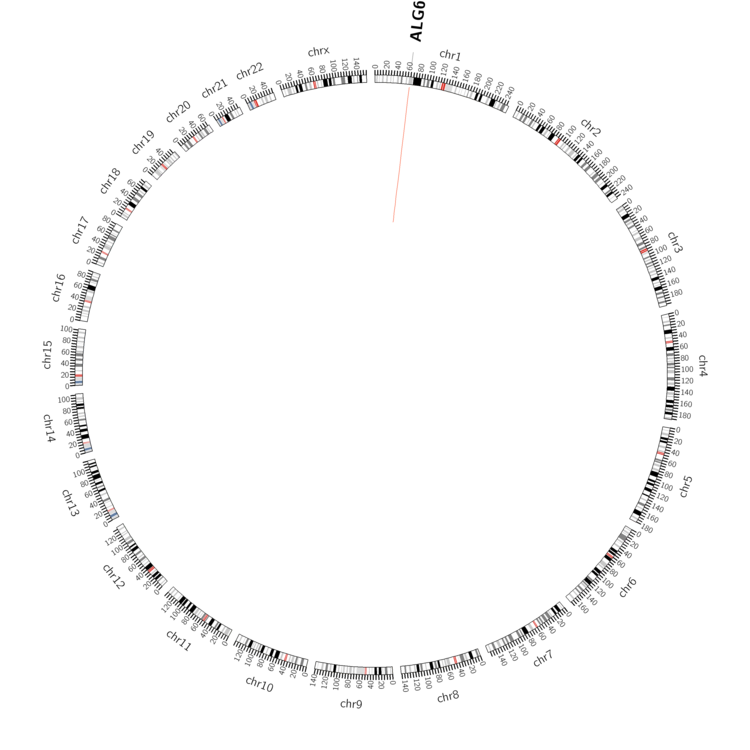 |
| - For Inter-chromosomal Variations |
| There's no inter-chromosomal structural variation. |
| - For Intra-chromosomal Variations |
| * Intra-chromosomal variantions includes 'intrachromosomal amplicon to amplicon', 'intrachromosomal amplicon to non-amplified dna', 'intrachromosomal deletion', 'intrachromosomal fold-back inversion', 'intrachromosomal inversion', 'intrachromosomal tandem duplication', 'Intrachromosomal unknown type', 'intrachromosomal with inverted orientation', 'intrachromosomal with non-inverted orientation'. |
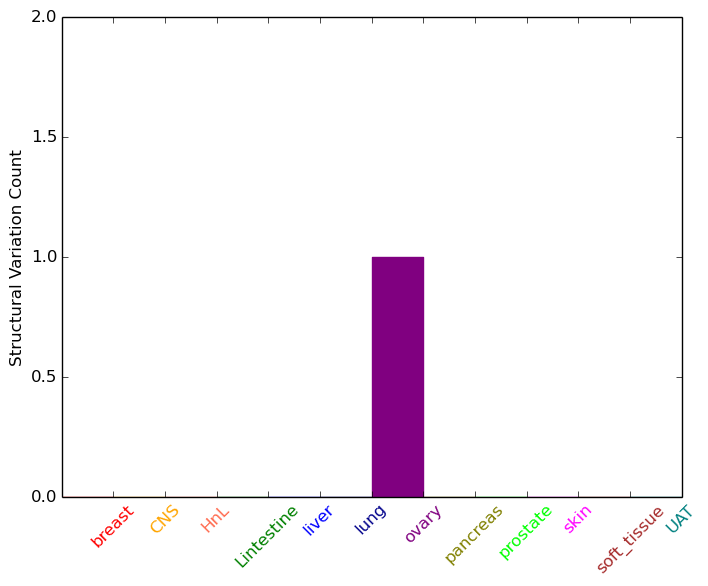 |
| Sample | Symbol_a | Chr_a | Start_a | End_a | Symbol_b | Chr_b | Start_b | End_b |
| ovary | ALG6 | chr1 | 63894958 | 63894978 | ALG6 | chr1 | 63896065 | 63896085 |
| cf) Tissue number; Tissue name (1;Breast, 2;Central_nervous_system, 3;Haematopoietic_and_lymphoid_tissue, 4;Large_intestine, 5;Liver, 6;Lung, 7;Ovary, 8;Pancreas, 9;Prostate, 10;Skin, 11;Soft_tissue, 12;Upper_aerodigestive_tract) |
| * From mRNA Sanger sequences, Chitars2.0 arranged chimeric transcripts. This table shows ALG6 related fusion information. |
| ID | Head Gene | Tail Gene | Accession | Gene_a | qStart_a | qEnd_a | Chromosome_a | tStart_a | tEnd_a | Gene_a | qStart_a | qEnd_a | Chromosome_a | tStart_a | tEnd_a |
| BP430141 | ALG6 | 7 | 356 | 1 | 63836543 | 63868001 | GNAS | 354 | 415 | 20 | 57486111 | 57486172 | |
| BI493648 | ALG6 | 8 | 146 | 1 | 63902734 | 63902872 | SMURF1 | 147 | 556 | 7 | 98696834 | 98697268 | |
| Top |
| Mutation type/ Tissue ID | brca | cns | cerv | endome | haematopo | kidn | Lintest | liver | lung | ns | ovary | pancre | prost | skin | stoma | thyro | urina | |||
| Total # sample | 1 | 1 | ||||||||||||||||||
| GAIN (# sample) | 1 | |||||||||||||||||||
| LOSS (# sample) | 1 |
| cf) Tissue ID; Tissue type (1; Breast, 2; Central_nervous_system, 3; Cervix, 4; Endometrium, 5; Haematopoietic_and_lymphoid_tissue, 6; Kidney, 7; Large_intestine, 8; Liver, 9; Lung, 10; NS, 11; Ovary, 12; Pancreas, 13; Prostate, 14; Skin, 15; Stomach, 16; Thyroid, 17; Urinary_tract) |
| Top |
|
 |
| Top |
| Stat. for Non-Synonymous SNVs (# total SNVs=24) | (# total SNVs=10) |
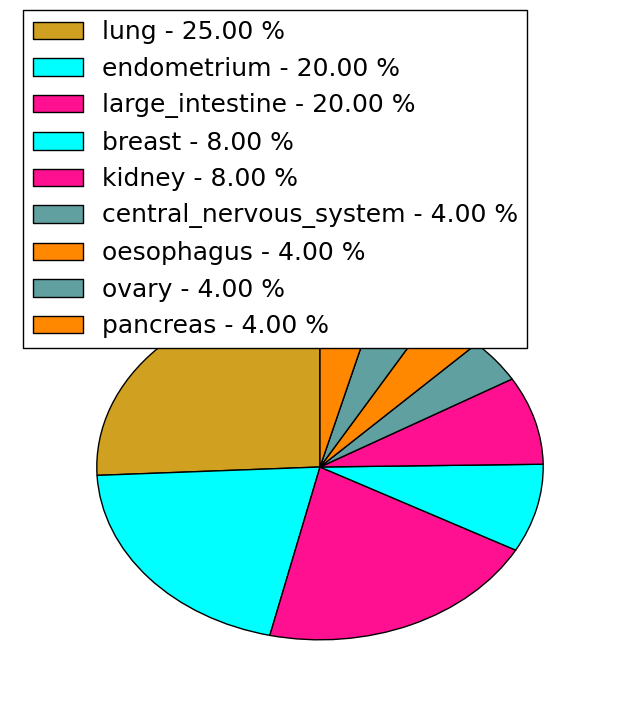 | 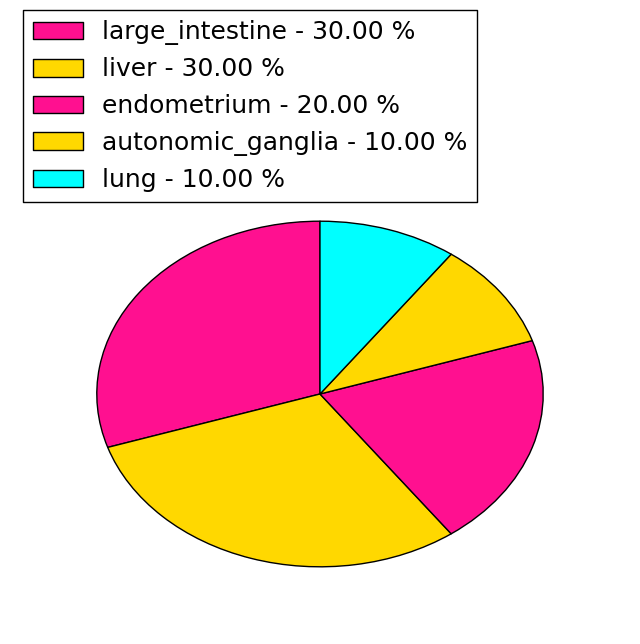 |
(# total SNVs=1) | (# total SNVs=0) |
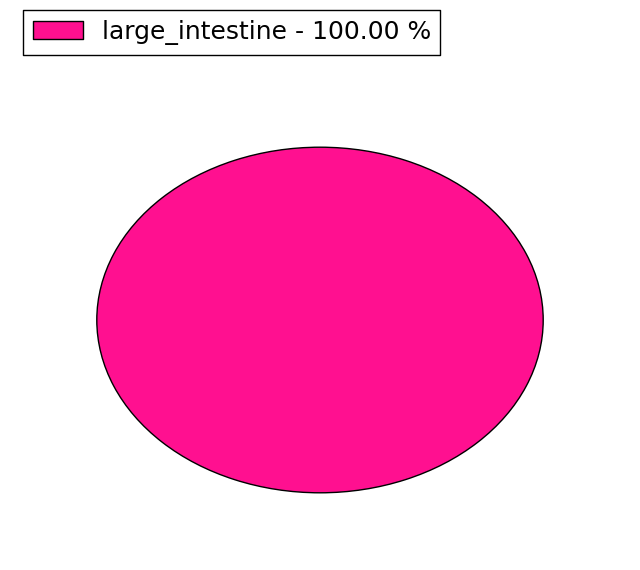 |
| Top |
| * When you move the cursor on each content, you can see more deailed mutation information on the Tooltip. Those are primary_site,primary_histology,mutation(aa),pubmedID. |
| GRCh37 position | Mutation(aa) | Unique sampleID count |
| chr1:63876940-63876940 | p.H206H | 4 |
| chr1:63902566-63902566 | p.P467S | 2 |
| chr1:63872018-63872018 | p.P126R | 2 |
| chr1:63876980-63876980 | p.K220* | 2 |
| chr1:63877657-63877657 | p.L247L | 2 |
| chr1:63879780-63879780 | p.K289Q | 1 |
| chr1:63870204-63870204 | p.R113H | 1 |
| chr1:63902557-63902557 | p.Q464E | 1 |
| chr1:63876877-63876877 | p.C185C | 1 |
| chr1:63879795-63879795 | p.R294C | 1 |
| Top |
|
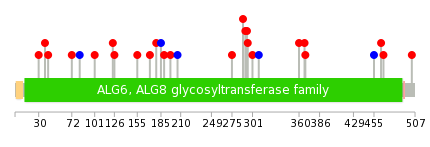 |
| Point Mutation/ Tissue ID | 1 | 2 | 3 | 4 | 5 | 6 | 7 | 8 | 9 | 10 | 11 | 12 | 13 | 14 | 15 | 16 | 17 | 18 | 19 | 20 |
| # sample | 1 | 1 | 1 | 6 | 2 | 1 | 1 | 1 | 2 | 4 | 2 | 5 | ||||||||
| # mutation | 1 | 1 | 1 | 6 | 2 | 1 | 1 | 1 | 2 | 4 | 2 | 5 | ||||||||
| nonsynonymous SNV | 1 | 1 | 1 | 4 | 2 | 1 | 1 | 1 | 2 | 3 | 1 | 4 | ||||||||
| synonymous SNV | 2 | 1 | 1 | 1 |
| cf) Tissue ID; Tissue type (1; BLCA[Bladder Urothelial Carcinoma], 2; BRCA[Breast invasive carcinoma], 3; CESC[Cervical squamous cell carcinoma and endocervical adenocarcinoma], 4; COAD[Colon adenocarcinoma], 5; GBM[Glioblastoma multiforme], 6; Glioma Low Grade, 7; HNSC[Head and Neck squamous cell carcinoma], 8; KICH[Kidney Chromophobe], 9; KIRC[Kidney renal clear cell carcinoma], 10; KIRP[Kidney renal papillary cell carcinoma], 11; LAML[Acute Myeloid Leukemia], 12; LUAD[Lung adenocarcinoma], 13; LUSC[Lung squamous cell carcinoma], 14; OV[Ovarian serous cystadenocarcinoma ], 15; PAAD[Pancreatic adenocarcinoma], 16; PRAD[Prostate adenocarcinoma], 17; SKCM[Skin Cutaneous Melanoma], 18:STAD[Stomach adenocarcinoma], 19:THCA[Thyroid carcinoma], 20:UCEC[Uterine Corpus Endometrial Carcinoma]) |
| Top |
| * We represented just top 10 SNVs. When you move the cursor on each content, you can see more deailed mutation information on the Tooltip. Those are primary_site, primary_histology, mutation(aa), pubmedID. |
| Genomic Position | Mutation(aa) | Unique sampleID count |
| chr1:63902674 | p.L179P | 1 |
| chr1:63872018 | p.Q464E | 1 |
| chr1:63879795 | p.C185C | 1 |
| chr1:63872767 | p.P467S | 1 |
| chr1:63879798 | p.Q503E | 1 |
| chr1:63876833 | p.G189R | 1 |
| chr1:63879817 | p.I197K | 1 |
| chr1:63876858 | p.H206H | 1 |
| chr1:63881568 | p.V275L | 1 |
| chr1:63862189 | p.G30C | 1 |
| * Copy number data were extracted from TCGA using R package TCGA-Assembler. The URLs of all public data files on TCGA DCC data server were gathered on Jan-05-2015. Function ProcessCNAData in TCGA-Assembler package was used to obtain gene-level copy number value which is calculated as the average copy number of the genomic region of a gene. |
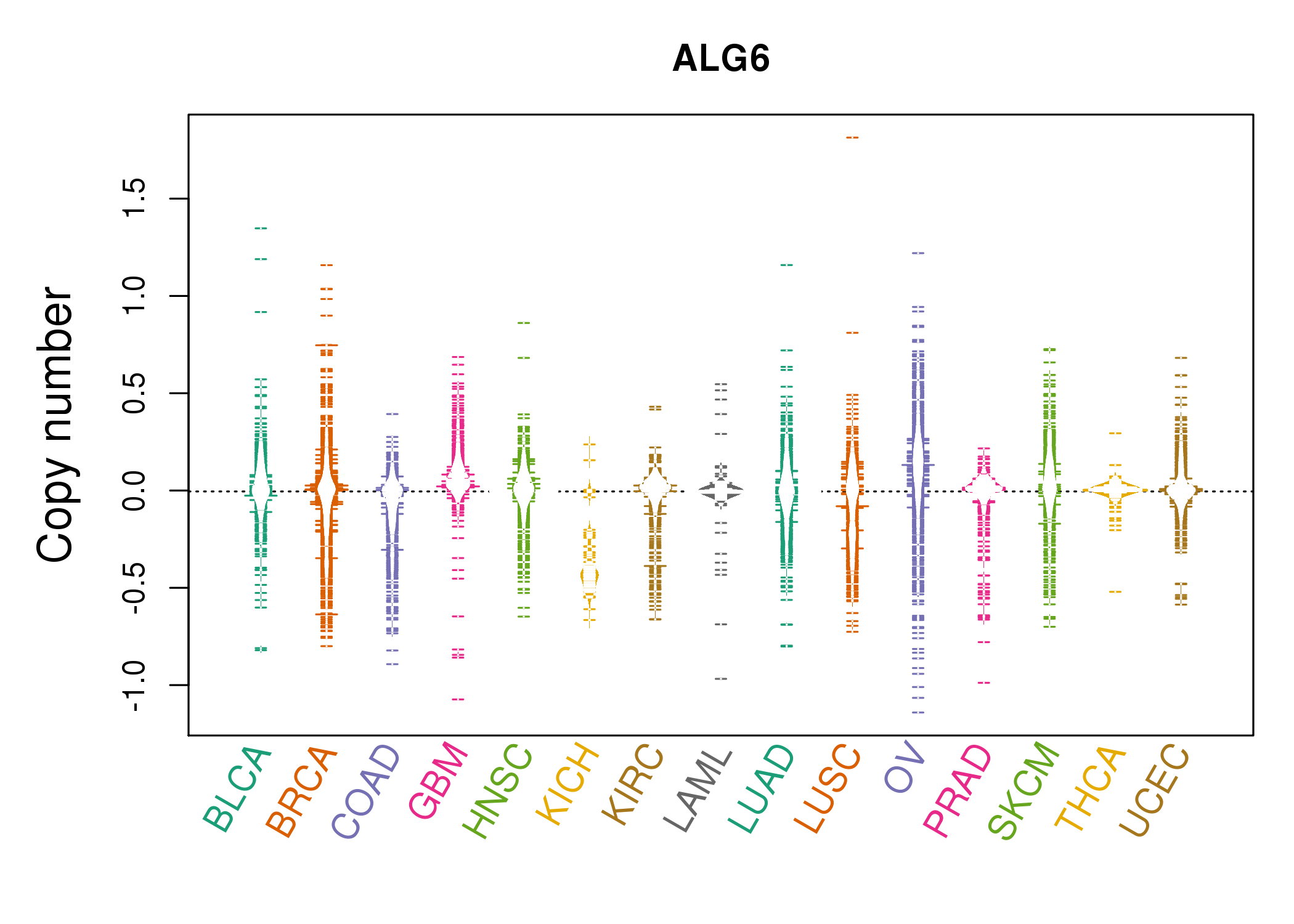 |
| cf) Tissue ID[Tissue type]: BLCA[Bladder Urothelial Carcinoma], BRCA[Breast invasive carcinoma], CESC[Cervical squamous cell carcinoma and endocervical adenocarcinoma], COAD[Colon adenocarcinoma], GBM[Glioblastoma multiforme], Glioma Low Grade, HNSC[Head and Neck squamous cell carcinoma], KICH[Kidney Chromophobe], KIRC[Kidney renal clear cell carcinoma], KIRP[Kidney renal papillary cell carcinoma], LAML[Acute Myeloid Leukemia], LUAD[Lung adenocarcinoma], LUSC[Lung squamous cell carcinoma], OV[Ovarian serous cystadenocarcinoma ], PAAD[Pancreatic adenocarcinoma], PRAD[Prostate adenocarcinoma], SKCM[Skin Cutaneous Melanoma], STAD[Stomach adenocarcinoma], THCA[Thyroid carcinoma], UCEC[Uterine Corpus Endometrial Carcinoma] |
| Top |
| Gene Expression for ALG6 |
| * CCLE gene expression data were extracted from CCLE_Expression_Entrez_2012-10-18.res: Gene-centric RMA-normalized mRNA expression data. |
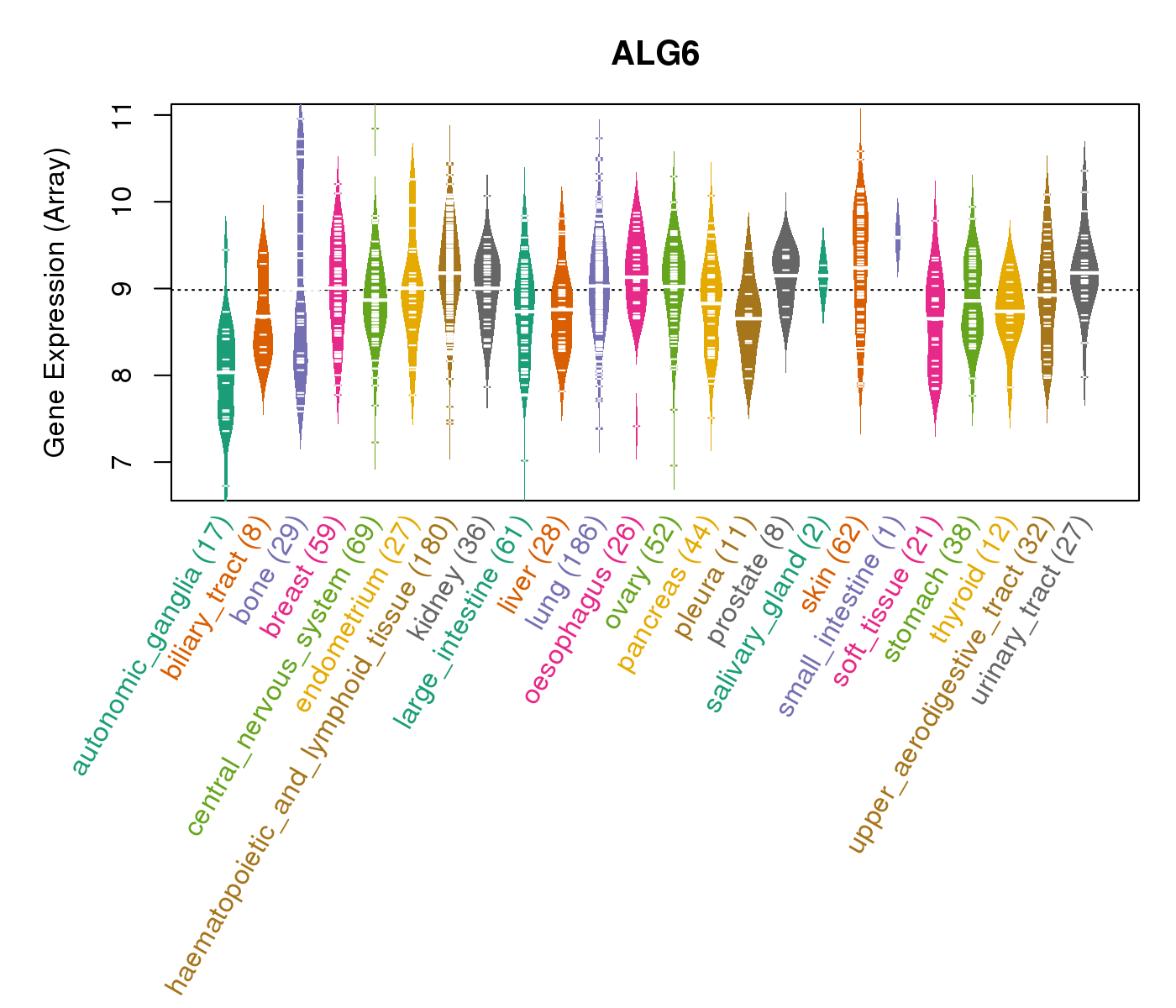 |
| * Normalized gene expression data of RNASeqV2 was extracted from TCGA using R package TCGA-Assembler. The URLs of all public data files on TCGA DCC data server were gathered at Jan-05-2015. Only eight cancer types have enough normal control samples for differential expression analysis. (t test, adjusted p<0.05 (using Benjamini-Hochberg FDR)) |
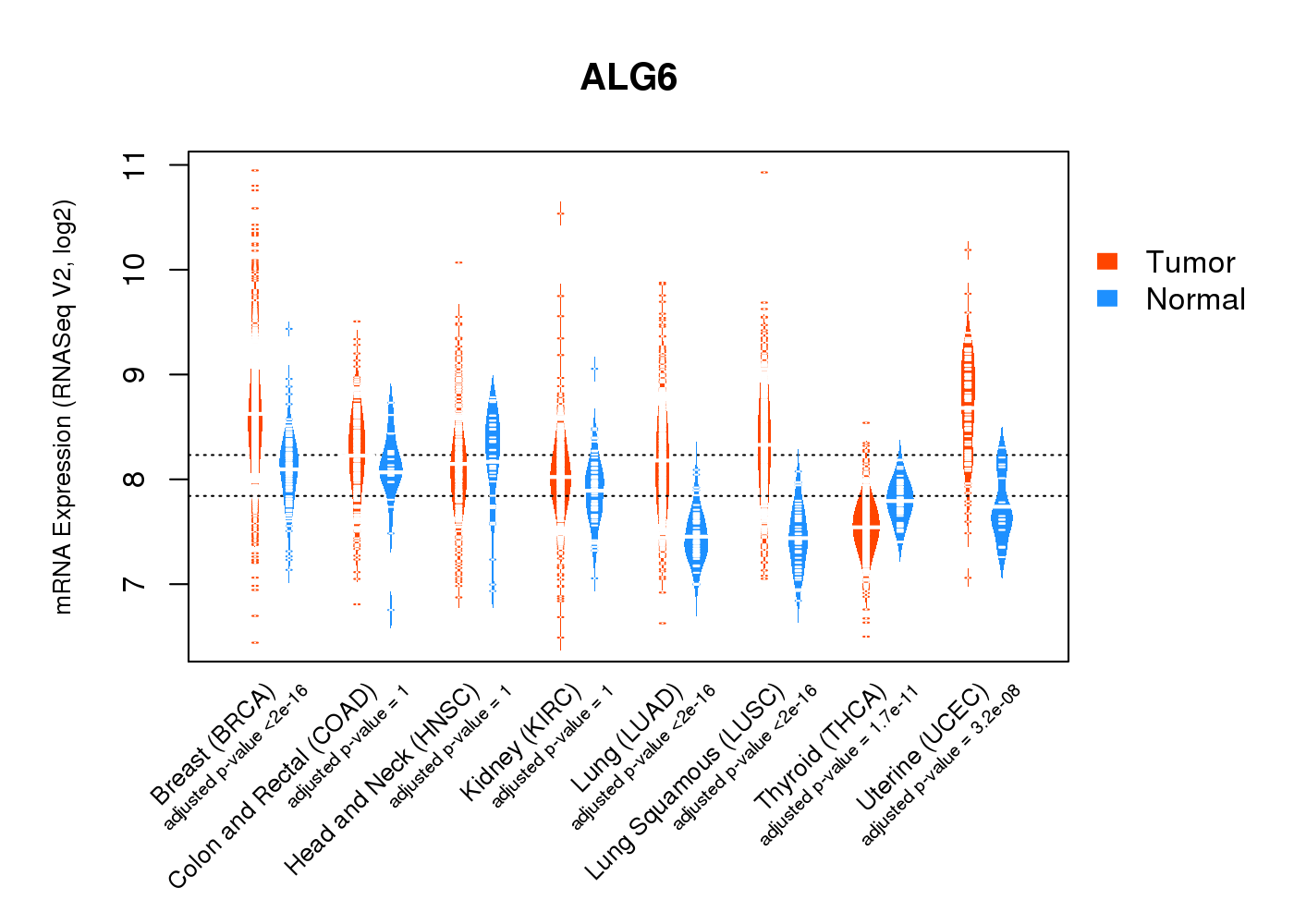 |
| Top |
| * This plots show the correlation between CNV and gene expression. |
: Open all plots for all cancer types
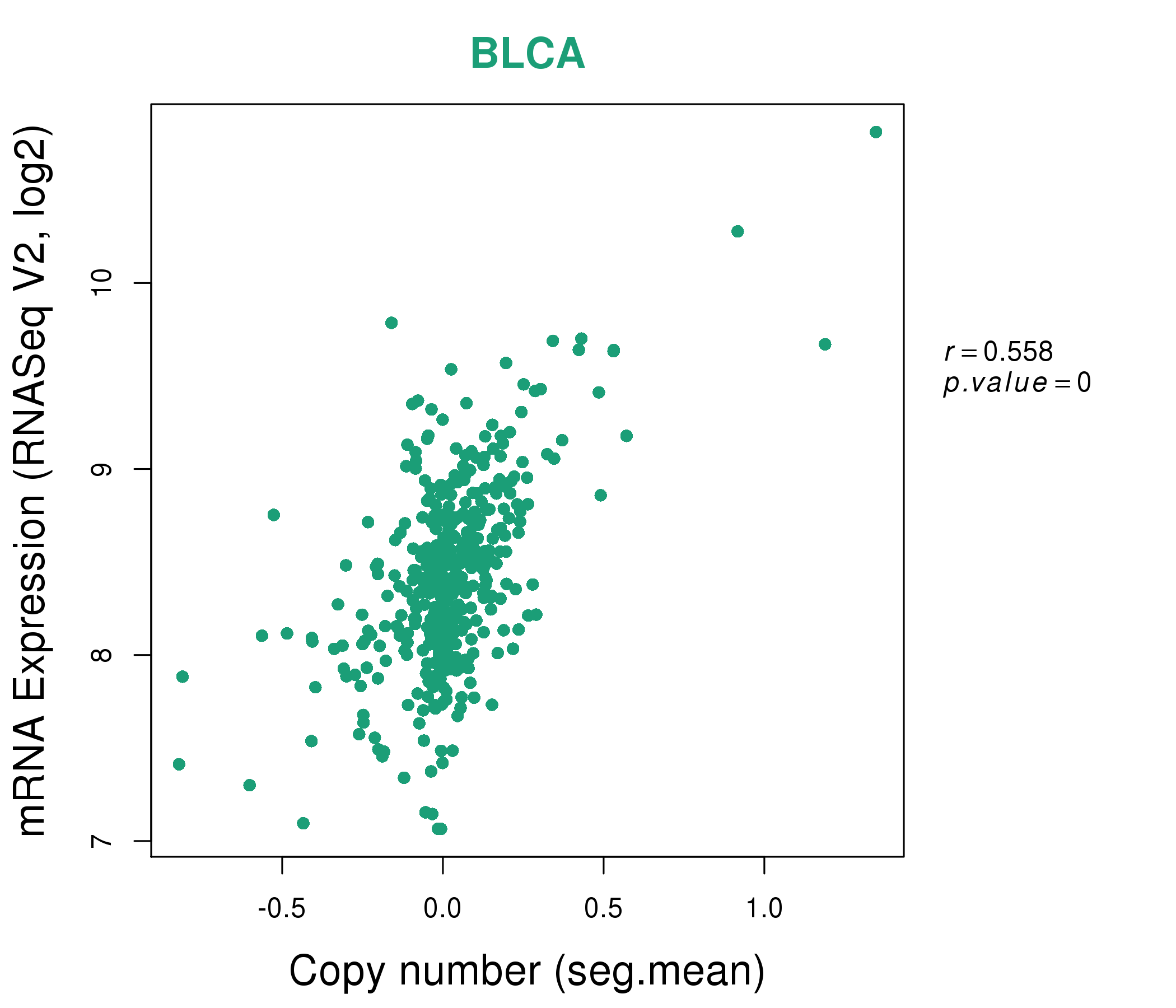 |
|
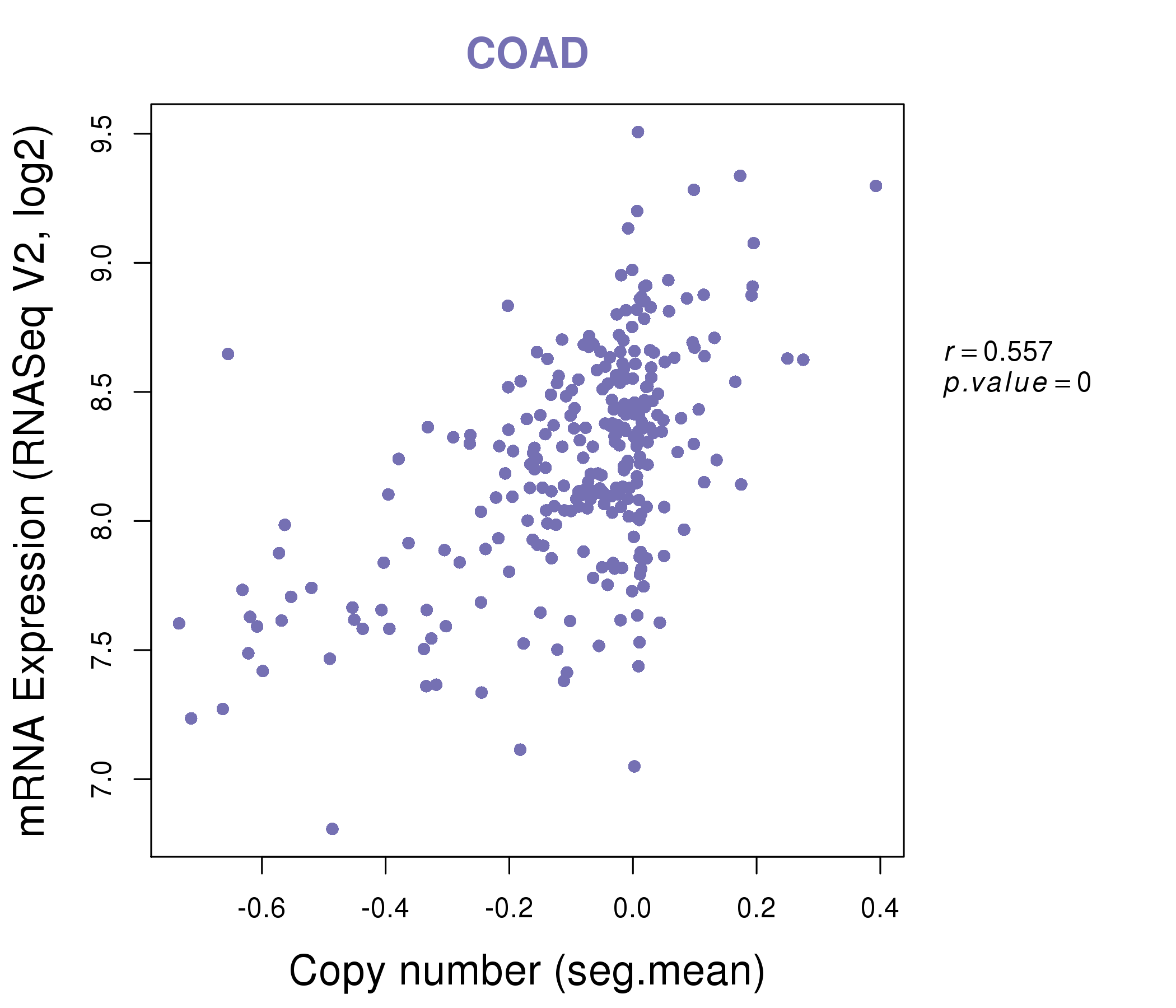 |
|
| Top |
| Gene-Gene Network Information |
| * Co-Expression network figures were drawn using R package igraph. Only the top 20 genes with the highest correlations were shown. Red circle: input gene, orange circle: cell metabolism gene, sky circle: other gene |
: Open all plots for all cancer types
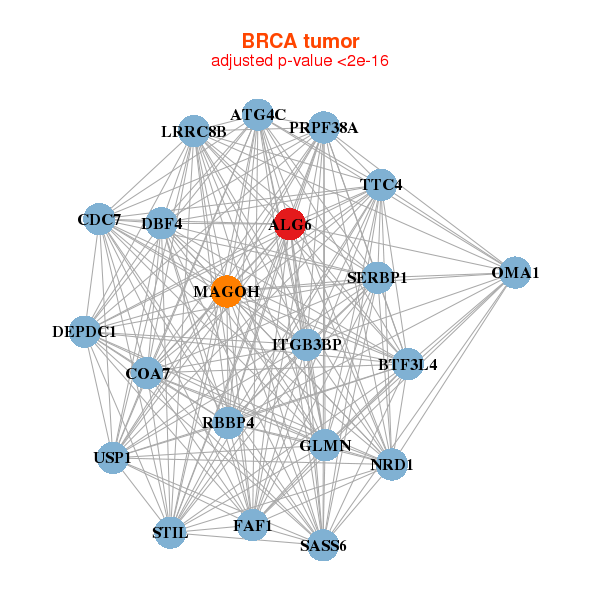 |
|
| ALG6,ATG4C,BTF3L4,COA7,CDC7,DBF4,DEPDC1, FAF1,GLMN,ITGB3BP,LRRC8B,MAGOH,NRD1,OMA1, PRPF38A,RBBP4,SASS6,SERBP1,STIL,TTC4,USP1 | ABI1,ACTR6,ALG6,API5,ARFIP1,C12orf29,C5orf28, SMIM15,CAAP1,MRPL42,NUS1,NXT2,PGGT1B,RAB14, RNF2,SCAMP1,SCOC,SERP1,TIPRL,TMEM33,UBA3 |
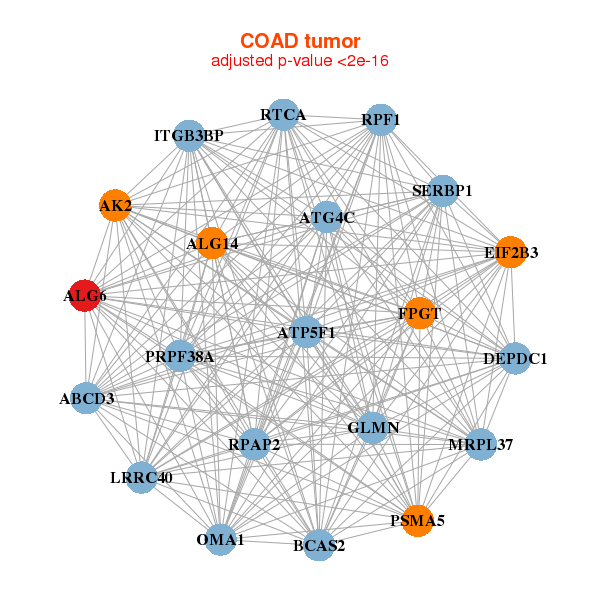 |
|
| ABCD3,AK2,ALG14,ALG6,ATG4C,ATP5F1,BCAS2, DEPDC1,EIF2B3,FPGT,GLMN,ITGB3BP,LRRC40,MRPL37, OMA1,PRPF38A,PSMA5,RPAP2,RPF1,RTCA,SERBP1 | ALG6,CNOT11,SMIM15,CAAP1,DTWD2,ESRP1,FAR2, FASTKD1,GRSF1,MRRF,AP5M1,NARS,NECAP1,PGGT1B, PIGA,PPIP5K2,PRPF40A,SACM1L,SLC30A9,SRPK1,STARD7 |
| * Co-Expression network figures were drawn using R package igraph. Only the top 20 genes with the highest correlations were shown. Red circle: input gene, orange circle: cell metabolism gene, sky circle: other gene |
: Open all plots for all cancer types
| Top |
: Open all interacting genes' information including KEGG pathway for all interacting genes from DAVID
| Top |
| Pharmacological Information for ALG6 |
| There's no related Drug. |
| Top |
| Cross referenced IDs for ALG6 |
| * We obtained these cross-references from Uniprot database. It covers 150 different DBs, 18 categories. http://www.uniprot.org/help/cross_references_section |
: Open all cross reference information
|
Copyright © 2016-Present - The Univsersity of Texas Health Science Center at Houston @ |






